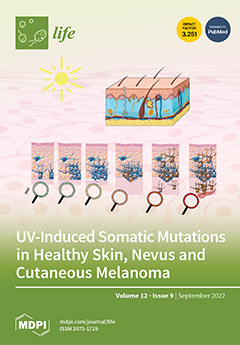Background: An arteriovenous fistula (AVF) is the first-line vascular access pathway for patients diagnosed with end-stage renal disease (ESRD). In planning vascular access, it is necessary to check the diameters of the venous and arterial components for satisfactory long-term results. Furthermore, the mechanism underlying the maturation failure and short-term patency in cases of AVFs is not fully known. This study aims to verify the predictive role of inflammatory biomarkers (the neutrophil to lymphocyte ratio (NLR), platelet to lymphocyte ratio (PLR), systemic inflammatory index (SII), and C-reactive protein (CRP)), Ca-P product, the prognostic nutritional index (PNI), and the diameters of the venous and arterial components in the failure of AVF maturation. Methods: The present study was designed as an observational, analytical, and retrospective cohort study with a longitudinal follow-up, and included all patients with a diagnosis of ESRD that were admitted to the Vascular Surgery Clinic of the Targu Mures Emergency County Hospital, Romania, between January 2019 and December 2021. Results: The maturation of AVF at 6 weeks was clearly lower in cases of patients in the high-NLR (31.88% vs. 91.36%;
p < 0.0001), high-PLR (46.94% vs. 85.55%;
p < 0.0001), high-SII (44.28% vs. 88.89%;
p < 0.0001), high-CRP (46.30% vs. 88.73%;
p < 0.0001), high-Ca-P product (40.43% vs. 88.46%;
p < 0.0001), and low-PNI (34.78% vs. 91.14%;
p < 0.0001) groups, as well as in patients with a lower radial artery (RA) diameter (40% vs. 94.87%;
p = 0.0009), cephalic vein (CV) diameter (44.82% vs. 97.14%;
p = 0.0001) for a radio-cephalic AVF (RC-AVF), and brachial artery (BA) diameter (30.43% vs. 89.47%;
p < 0.0001) in addition to CV diameter (40% vs. 94.59%;
p < 0.0001) for a brachio-cephalic AVF (BC-AVF), respectively. There was also a significant increase in early thrombosis and short-time mortality in the same patients. A multivariate analysis showed that a baseline value for the NLR, PLR, SII, CRP, Ca-P product, and PNI was an independent predictor of adverse outcomes for all of the recruited patients. Furthermore, for all patients, a high baseline value for vessel diameter was a protective factor against any negative events during the study period, except for RA diameter in mortality (
p = 0.16). Conclusion: Our findings concluded that higher NLR, PLR, SII, CRP, Ca-P product, and PNI values determined preoperatively were strongly predictive of AVF maturation failure, early thrombosis, and short-time mortality. Moreover, a lower baseline value for vessel diameter was strongly predictive of AVF maturation failure and early thrombosis.
Full article






